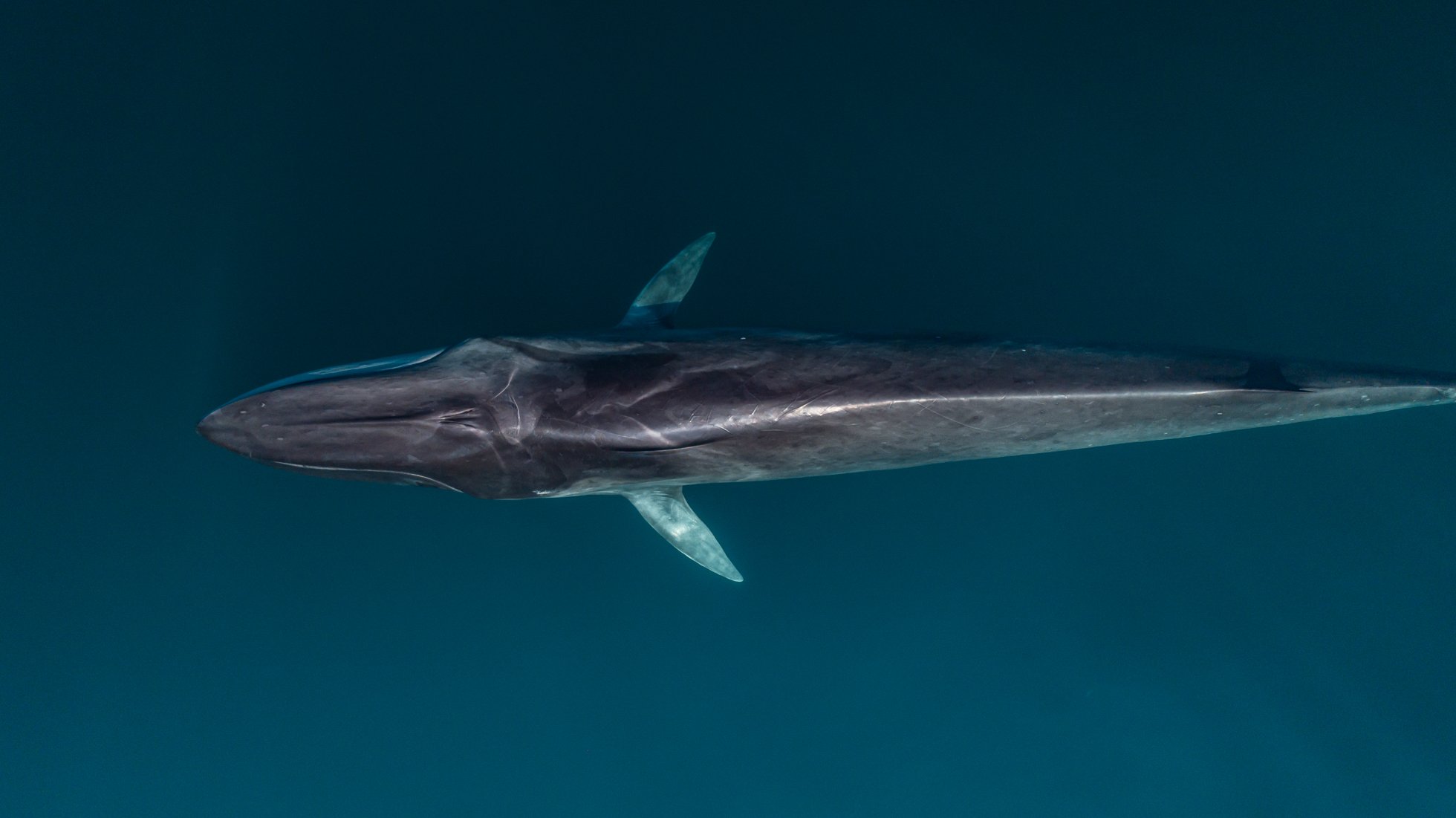
Fin Whale
Fin whales in Southern California
The Southern Californian Bight (the curved coastline from Point Conception to San Diego and encompassing the Channel Islands) is a highly productive ecosystem due to strong areas of upwelling (cold, nutrient rich water is brought to the surface increasing productivity). It is an important foraging area for larger baleen whales such as blue, fin, and humpback whales. While blue whales are seen in Southern California predominantly in the summer and fall (migrating southward for the winter), Fin whales can be seen in the area year round. Recently, researchers have hypothesized that there could be a resident population of fin whales in Southern California. Additionally, visual surveys and acoustic data collected by researchers have shown that fin whales in Southern California forage closer to shore during the winter and spring and shift to more offshore waters in the fall and winter. Prey distribution in Southern California is patchy and the fast, sleek fin whale quickly swims between areas of prey. As a result, fin whales can quickly move in and out of an area.
In Southern California, fin whales feed on krill, small schooling fish (such as anchovy), and schooling squid. They are active lunge-feeders, engulfing a large amount of water and prey, then filtering out the water through their baleen trapping the prey inside. Fin whales can be observed traveling, foraging, and resting. The foraging dive duration and depth of fin whales depends on the location of their prey within the water column. For example, researchers have observed that fin whales make shallower dives at night when prey (such as krill) make their vertical migration to the upper water column. During the day, prey descends back down to deeper water resulting in deeper and longer dives made by fin whales. When not foraging, fin whales spend most of their time at or near the surface. Fin whales can be observed foraging in small social groups of two to eight individuals. Fin whales can also be observed foraging in mixed-species groups such as feeding on small schooling fish with dolphins, feeding on krill in the same areas as blue whales, etc.
During a whale watching tour, fin whales are enjoyable to watch. These large whales (second only to blue whales) can be curious about boats and have been known to make close passes to investigate them. Unfortunately, fin whales don’t often display surface behaviors; they very rarely fluke during a dive, they very rarely breach, and the likelihood of observing a surface feeding event is low. When they surface for a breath, their blow is tall and columnar, however not much of their bodies are revealed. You are likely to observe the rolling back and tall, triangular dorsal fin as they descend on their dive.
Fin whales are at a high risk of being struck by large container ships in the shipping lanes that lead to the Los Angeles Harbor.
Sources and further Reading
CARWARDINE, M. A. R. K. (2020). Handbook of Whales, dolphins, and porpoises of the world. PRINCETON University PRES.
Reeves, A. E. R. R. (2021). National Audubon Society Guide to Marine Mammals of the World. New York: Alfred A. Knopf, 2009. Third printing.
https://www.fisheries.noaa.gov/whales





